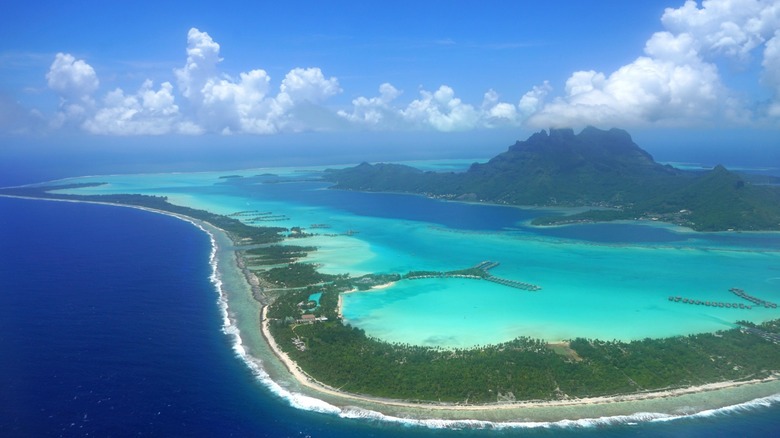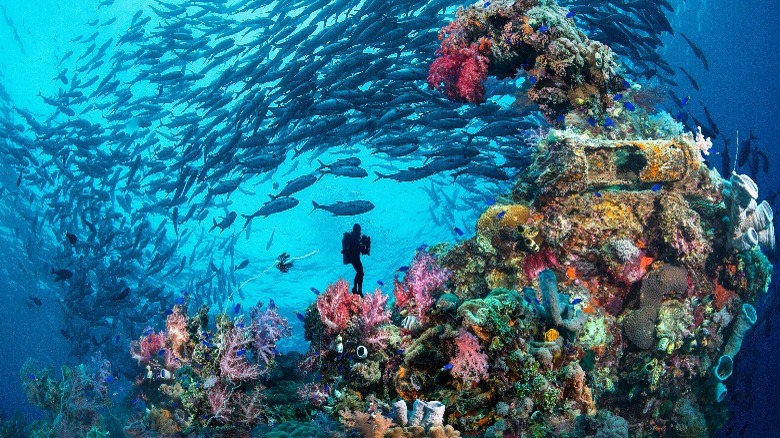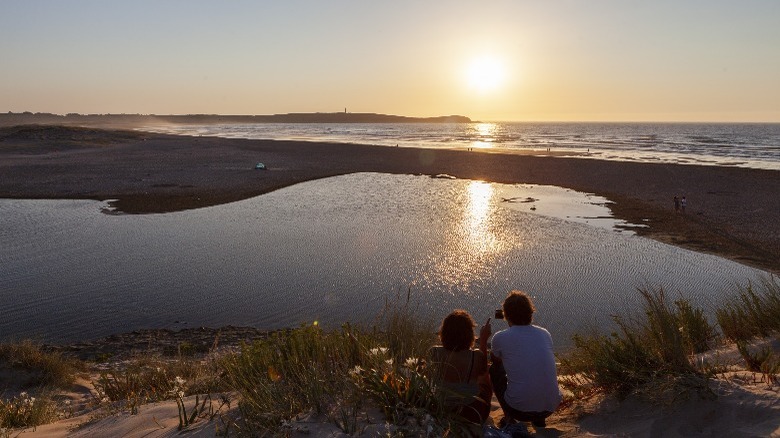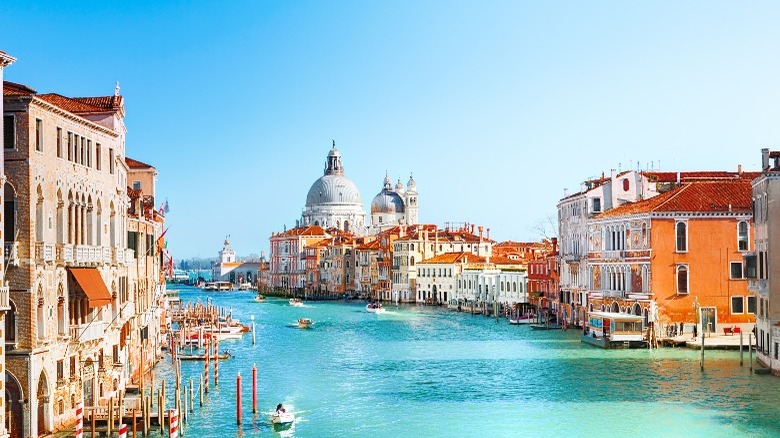What Are Lagoons And How Are They Formed?
Plenty of bodies of water are called lagoons, not always accurately, according to World Atlas. On the other hand, real lagoons are often called by other names, like estuaries, sounds, bays, or lakes, per National Geographic. It turns out, however, that lagoons aren't too hard to define. Essentially, they're small bodies of water generally attached to a large one, like the ocean, but partially blocked from the larger body by some kind of barrier. This can be a sandbar, an island, or a reef.
The word comes from the Italian laguna, which is found in place names like Laguna Madre, Texas, which actually contains several lagoons. Interestingly, the famous Laguna Beach in California is not a lagoon (via National Ocean Service).
Lagoons often contain a brackish mixture of salt and freshwater, and the creatures that live in them adapt to the environment (via National Geographic). Whereas artificial, man-made lagoons are becoming popular for resorts, according to World Atlas, real lagoons can be found worldwide. There are two different types: atoll and coastal lagoons.
Atoll lagoons
Atoll lagoons are protected from larger bodies of water by coral reefs. These types of lagoons specifically form around volcanic islands that sink because of eruptions. National Geographic describes them as shallow. However, the National Ocean Service suggests they're deeper than the other type, coastal lagoons. According to National Geographic, their shallowness contributes to their characteristic light blue color, as does the limestone that makes up the coral exoskeletons of the reef.
Atoll lagoons are most common in the South Pacific and the Indian Ocean, per World Atlas. They can take as long as 300,000 years to form. Few animals, however, are indigenous to atoll lagoons. Many animals are swept into them by ocean tides, and of these, jellyfish thrive best in the atoll environment.
Some well-known atoll lagoons include Lighthouse Reef in Belize, Chuuk Lagoon in Micronesia (pictured), and Bora Bora in French Polynesia (via World Atlas).
Coastal lagoons
Coastal lagoons are more common than atolls. Instead of coral reefs, they're protected from a larger body of water by sandbars or barrier islands, according to National Geographic. They often form in areas with a small tidal range; Surge Watch explains that in these places, the high tide is not much different than the low tide. Here, the ocean may seep in where a sandbar or island is eroding (via National Geographic). If it doesn't flow back out, a lagoon will form, per World Atlas. This is more likely to happen on gently sloping coasts, according to the National Ocean Service.
Even if the tidal range is small, the depth of the lagoon will change with the tides. At high tide, there will be more animal life in the lagoon, as the animals will have come in with the tide (via World Atlas). The National Ocean Service notes they're generally shallower than atoll lagoons. This shallowness means their "lifespan" is shorter than atoll lagoons, or in other words, shifting water and sediment will erase the lagoon faster, either by breach, flooding, or drying up.
A sub-type of coastal lagoons are river-mouth lagoons, which form where a river meets the sea. They're mostly found in New Zealand and the South Pacific. In general, however, coastal lagoons are most common in the United States and Canada.
Other famous lagoons
Though not as common in Africa, the continent does have some notable lagoons. Lake Nokoue, Benin, is almost entirely blocked from the ocean by a sandbar and thus contains more freshwater than most lagoons. It once housed the community of Ganvie, which was a safe haven from slave-trading tribes who weren't allowed to enter the lagoon. Buildings there were constructed on stilts, and the only transportation was by bridge or boat (via National Geographic).
Lake Piso, Liberia, is often used as a harbor, which is common for coastal lagoons. Another port lagoon is the Lycian Lagoon in Turkey, which has been used this way for centuries (via World Atlas).
In North America, the Outer Banks of North Carolina contain a series of lagoons that are called sounds, including Currituck, Albemarle, and Pamlico. Like most lagoons, they're better protected from hurricanes than more exposed areas. However, the sandbars of the Outer Banks are eroding badly.
Venice, Italy (pictured) is probably the world's most famous lagoon. The city is built on sandbars in a wetland area of salt marshes and mudflats. Two rivers, the Sile and the Brenta, empty into the Adriatic Sea through small passages between islands. Because of the extensive building in Venice, including the creation of man-made islands, flooding has grown worse with time, and the city has had to take steps to mitigate it. Look quick, because lagoons like this one may disappear with time.



